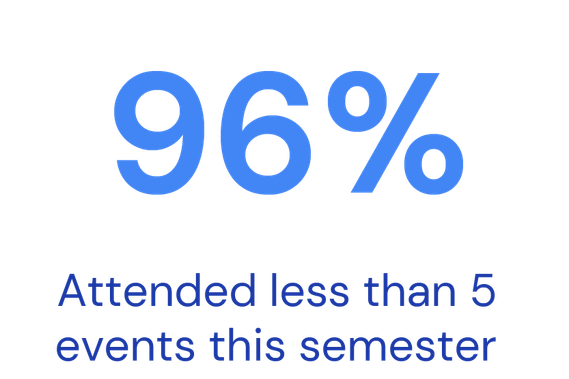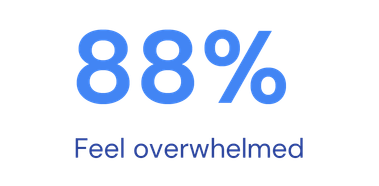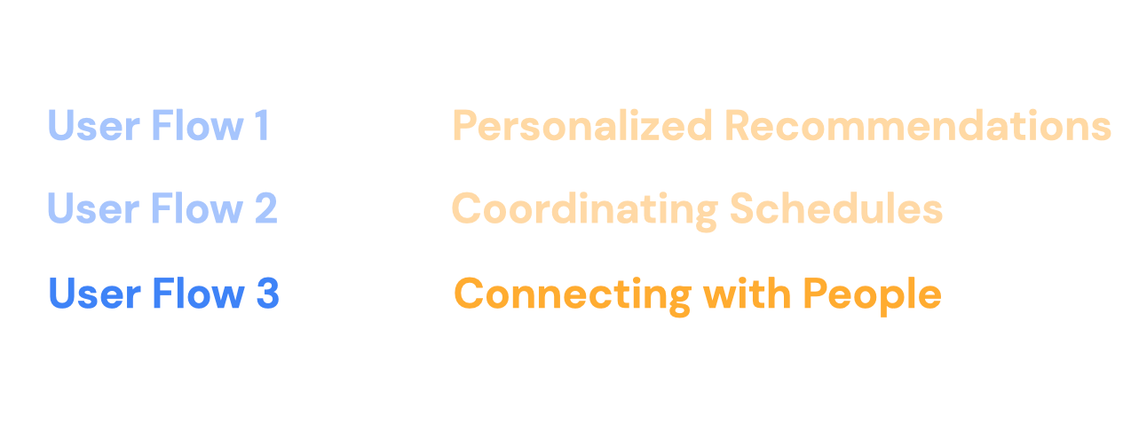How do we foster connectedness through events at University of Toronto?
One of the major problems at University of Toronto is the lack of social involvement outside of their academic activities. In order to understand the issues we went and conducted research within the University of Toronto and examined it from a student point of view.
Reach - The event and social app for university students
We helped bridge the gap between student involvement and academic success by creating a solution that provides meaning, opportunity and social engagement when attending school events.
Research
We conducted research through primary interviews with students and compiled secondary data from sources such as the 2017 National College Health Assessment commissioned by the University of Toronto. We realized through these stats that there was a need for greater student involvement in extracurricular activities.
*Based on 9 Interviews & 27 Survey Respondents
* Based on 2,579 respondents from the 2017 National College Health Assessment
How are core values of UofT Students translating into Pain Points?
Through our research, we were able to synthesize some key themes that embodied our UofT Students and their existing pain points that are limiting their success
Visualizing the Persona and Journey
With this data we really examined what the current experience is like for a student. What makes them tick? how has their experience as a student failed their expectations? We needed to unpack these answers through empathy mapping, affinity diagrams and examining the as-is journey.
Developing a Persona
Once we understood the data through our primary and secondary research, we really sought to develop a persona that would embody the diversity of the students we met and have the attributes that informed our first hand experiences with other students and the observations from the data we collected
Mapping out the As-Is Journey
Currently, the journey to find an event to participate in is hard and the 3 barriers that affect students from joining all happen in what we identify as the 4 categories of our user journey. When he wants to get involved its usually his schedule and homework that that affect him the most, It then involves having to find the right event which means he must seek one out especially since all events are scattered on different platforms such as Facebook, Instagram and 2 separate UofT event calendars which inevitably takes too much time to research.
What does Bruno Need?
Since we were able to synthesize our findings, we needed to rationalize the core problems. What would our solution help provide Bruno in his daily life? What are some of the things students and therefore, our persona Bruno need? Our group assessed this question with these 5 statements
Design Statements that guided our team
To help guide our initial prototype, we wanted to make sure we were tackling the right problems so we created Hills statements that helped guide the features and functions of our prototype namely,
Visualizing the To-Be Scenario
Our team then used these insights and design statements to visualize how the experience for Bruno could improve once he started using our app. From anxiety, confusion and disorganization his experiences transforms to one that anticipates his individuals needs and desires which influenced his decision to attend the event.
Creating the Initial Medium-Fi Prototype
With a clear direction in mind, we set out to build our first prototype using the design statements we identified to create an initial product. Our main focus was that the app itself should be easy to use, reduce the barriers for engagement and offer seemless connectivity from the event down to your calendar. Other key features we included were,
- Connecting to our app through a students UTOR Id
- Finding personalized events & recommendations
- Integrating social connections and interactions before the event starts
Summative Testing & High Fidelity Prototype
The inital results yielded some problems with our app. Though we were aware our solution wasn't fully refined, It was great to get specific data on the usability potential problems from a student first hand. Its one thing to design based on your team's perspective, but its another thing to design from a user specific point of view that only has the information you give them and their own biases. Some of the main points included
Finding solutions and refining new issues
The feedback we received was detailed and specific and helped us to pinpoint problems we didn't for see. It was now important to integrate our solutions into our high fidelity prototype so that we can see clearly how the overall functionality responds to our users. As you can see below, new issues came up as a result from our further iterations
Iterating Further
The feedback from our Usability Test helped us to also understand that further refinement was needed to be intuitive, responsive and memorable while helping to reduce the cognitive burden for our users when using our app.
Results from our user testing & next steps
The results from our user testing helped us refine the little things that are often not considered when you create an app that serves a large institution such as University of Toronto. With over 90,000 students in a tri-campus setup, having an app that serves every little need is impossible. However, we took away from this project a lot of good insights.
- Details are Important! People want to know how things operate and making sure there is a sense of transparency in how you design is central to the overal functionality. Leaving things vague and ambiguous leaves more room for questions, so designing and getting feedback is essential for working out the kinks.
- Simplicity and usability is key. Sometimes trying to engineer something for the right audience means we put lots of effort into features without actually understanding how users interact with a problem. Knowing the basic needs of your users means, you can create a flow that works best for them.
- Go outside your comfort zone and embrace the ambiguity We went through many ideas making this and I think the ones we all agreed were useful were the result of embracing wild and big ideas! having an eye for the extreme means you are creating from a zone that is unfiltered and can often be original. Now not all big ideas are the best ideas, but something I usually go by is that "big ideas can be dialed down, but its rare you can scale down small ideas that often put function over the person"
Going forward, More user research and usability testing is something that is needed. I think we have as a team, created the start of what can be a useful app for University students, but as with a big problem such as professional development, connection and extracurriculars, there is so many issues you can help bridge especially with an app like this.
With more research, I would especially like to see how two people can interact and observe the types of conversation and connection they have while using the app. It would be very interesting to see these dynamics as the results can look a lot different than only obeserving 1 persons journey through an app rather than a relationship with another person
Closing Thoughts & Reflections
Transitioning into the UX arena is something I wish I found earlier and what I have learned so far is that The User Is First. Coming from an Advertising background, I see clearly, theres a distinct Top-Down approach that confused me and my own creative process. Do I think of the business needs first? do I think of what the business wants to communicate? I see now how both are important and you need to give yourself the freedom to see the big ideas from both sides of the coin!
Learning from a UX Design process has helped me refine my own approach to projects going forward and has refined my love for the User Research aspect of design. As you can already tell, I love designing visually impactful things but I do believe good design is coming from knowing what people need. If you are aware of what people need and not necessarily just what they want, your ideas are a lot more valuable and resonate with the people you want to help.
Project Team
Katia Ghanem
Eric Hanson
Matthew Lam
Veronica Rutherford
I worked on the User Research aspects of this project but also contributed to the final iteration of the User Experience. I really loved facilitating a lot of the User Interviews, Analyzing the Data and forming a strategy for distilling our data from Usability Testing into codes and generating themes from those codes. This all helped to inform the final navigation and help polish the overall User Interface of this app
As a team, I will say we all worked together and contributed a lot of the work you see together. We saw the problem and the data from both a User Driven but also a Strategic viewpoint. It was great to be insync together!































